NO COST ENERGY SAVING IDEAS
- GOAL:
- The student will become familiar with and will put into practice no cost and low cost energy saving ideas.
- OBJECTIVES:
- The student will be able to:
- 1. Discuss the 6 basic areas of energy use in the home.
- 2. List no cost and low cost energy saving ideas that most people can put into practice.
- LESSON/INFORMATION:
- There are many people who want to save energy but cannot afford to build an energy efficient home. Fortunately, there are many no cost and low cost practices that can help everyone reduce energy waste and save energy dollars.
- Ways in which energy consumption is used in the home can be seen on the graph below. Once consumers realize where their energy dollar is going, they are better able to put conservation ideas into practice.
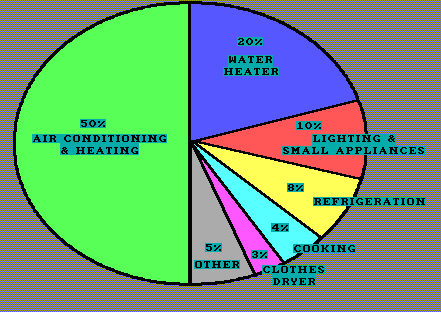
- Chart Information Based on SLEMCO'S Design One Booklet
- As seen in the graph, the main areas of energy use in the home are as follows:
- Air conditioning and heating
- Water heating
- Lighting and small appliances
- Refrigeration
- Cooking
- Clothes Drying
- There are no cost and low cost energy saving tips that can help the consumer save on energy costs in all of these areas.
- Air Conditioning and Heating:
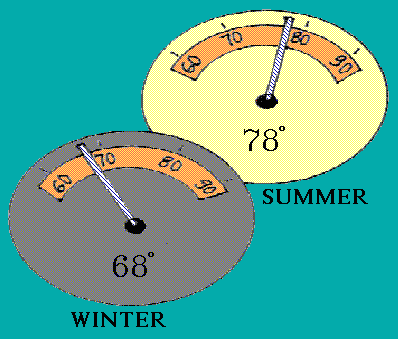
- 1. Raise the thermostat to 78°F in the summer and lower to 68°F in the winter.
- 2. During the spring, summer and fall months, use fans and open windows instead of running the air conditioner. Dress in light and loose fitting clothing. Try to keep humidity out of the house.
- 3. Block heat out of the house with exterior shading or, if this is not possible, use lined curtains and/or shades.
- 4. In the winter, dress in warm, layered clothing.
- Water Heating:
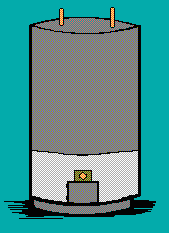
- 1. Use less hot water. Wash clothes and run the garbage disposal with cold water.
- 2. Take showers instead of baths.
- 3. Use the short cycle on the dishwasher.
- 4. Set the thermostat on the water heater at 120°F.
- 5. Use an insulation kit to cover the water heater. Be sure to use the kit recommended for the heater installed in your home.
- 6. Turn the water heater off when you leave home for more than two days.
- 7. Repair water leaks and drips.
- 8. Install a flap valve to prevent hot water from flowing back into the pipes. A pop off valve can also be added by safety.
- Lighting and Small Appliances:
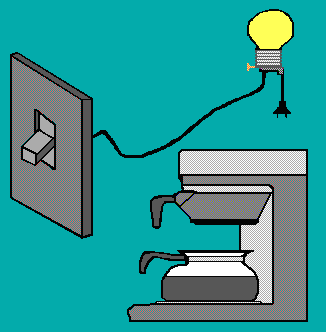
- 1. Turn lights off when not in use.
- 2. Use bulbs of lower wattage.
- 3. Direct light on work area only.
- 4. Use new adaptable fluorescent bulbs in old incandescent fixtures.
- 5. Use natural daylight when possible.
- 6. Avoid using small appliances whenever possible. (Use a spoon, not a mixer.)
- 7. Use small appliances instead of larger ones whenever possible. (Toast bread in toaster, not in the oven.)
- 8. Use appliances that have a lower wattage.
- Refrigeration:
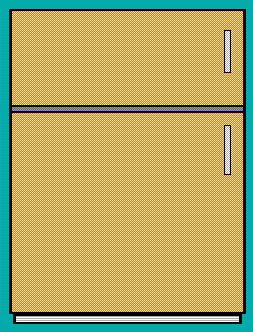
- 1. Be sure seals around refrigerator and freezer doors work properly.
- 2. Freezers work most efficiently when full.
- 3. Refrigerators should be full but not overcrowded. Air circulation is needed.
- 4. Set the refrigerator and freezer at the highest possible settings that will still preserve food quality.
- 5. Cool foods to room temperature before putting them in the refrigerator.
- 6. Cool foods in the refrigerator before placing them in the freezer.
- 7. Check the door gasket for air leaks with the $1 bill test. Close the door with the bill half inside the refrigerator. Pull on the bill. There should be resistance; it should not slip out easily.
- 8. Keep heat coils clean.
- Cooking:
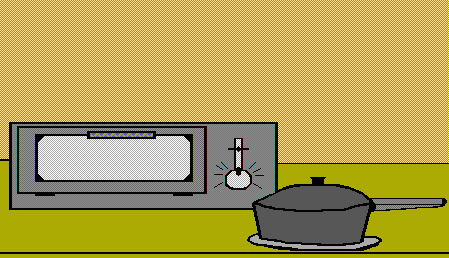
- 1. Use the microwave oven or small appliances instead of the oven or range top whenever possible.
- 2. Whenever using the oven, cook as many items in the oven as is practical.
- 3. Use pots closest to the burner's size.
- 4. Keep pots covered when cooking.
- 5. Use the exhaust over the range when heat and steam are being produced.
- 6. Do not open oven doors or remove pot lids until cooking is complete.
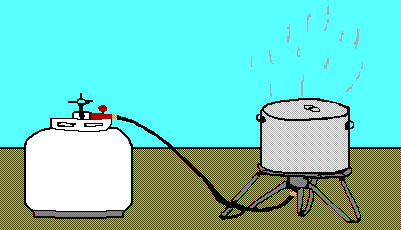
- 7. During the summer months, do more cooking outside.
- Clothes Drying:
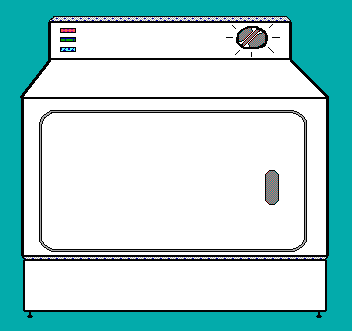
- 1. Do not over dry clothes. Hang clothes out on the line if possible.
- 2. Be sure dryer vent is placed to carry warm, humid air outside.
- 3. Dry several loads one after the other. This way the dryer only has to heat up once.
- 4. Dry clothes on cooler cycles whenever possible.
- 5. Do not dry clothes during the hottest part of the day.
- ACTIVITY 1:
- Print this lesson and using a black and a red ink pen, go over this list of hints.
- 1. Use the black ink pen to circle the numbers in front of the hints that you already practice.
- 2. Use the red ink pen to circle the numbers of the hints that you plan to put into practice in the near future.
Good Luck and Happy Low Utility Bills!!
- RESOURCES:
- Energy Conservation for Limited Income and Senior Citizens. SLEMCO, Lafayette, LA, n.d.
- Saving Energy at Home. Florida Governor's Energy Office. Tallahasse, FL, 1989.
- Your Lifestyle Can Make a Difference. SLEMCO. Lafayette, LA, n.d.
INFORMATION CHECK
- Choose the answer that best completes the statement.
- _____1. About ___% of energy costs go to heating and cooling and ___ % to water heating.
- a. 25%, 10%
- b. 50%, 50%
- c. 50%, 20%
- d. 25%, 20%
- _____2.In the winter, dress in ___ clothing.
- a. wool
- b. warm
- c. layered
- d. b and c
- _____3. In the summer, turn the cooling unit down and ___.
- a. use fans
- b. open attic door
- c. use humidifier
- d. a and c
- _____4. Most hot water heaters can be turned down to:
- a. 160° F
- b. 120° F
- c. 105° F
- d. none of the above
- _____5. Which of the following cannot be done with cold water?
- a. wash clothes
- b. garbage disposal
- c. wash dishes
- d. brush teeth
- _____6. Save money on lighting by
- a. using fluorescents
- b. using lower wattage
- c. using natural light
- d. all of the above
- _____7. An energy saving way to prepare potatoes would be to
- a. microwave them
- b. bake in oven
- c. boil on range top
- d. all of the above
- _____8. Refrigerators should
- a. allow air circulation
- b.be very full
- c. be on coldest setting
- d. a and c
- _____9. Exhaust fans over the range help to remove
- a. heat
- b.humidity
- c. odors
- d.all of the above
- _____10. It is best to dry clothes
- a. on the highest setting
- b. in a cool dryer
- c. one load after another
- d. all of the above
TEACHER'S NOTES
- ACTIVITY 1:
- Have students report how many of these hints they already follow and how many they plan to start doing. Perhaps plan a follow-up session a week or two ahead to check up on their progress.
- DEFINITIONS:
- 1. No cost conservation - Not all people are able to build an energy efficient home or go out and purchase a new, more efficient air conditioning system. This activity packets gives many no and low cost energy saving ideas that everyone can follow.
- ANSWERS TO INFORMATION CHECK:
- 1. c
- 2. d
- 3. a
- 4. b
- 5. c
- 6. d
- 7. a
- 8. a
- 9. d
- 10. c
Comments or questions to: TechAsmt@LA.GOV
Return to Introduction Menu








